TWELVE CENTURIES OF INFOGRAPHICS.
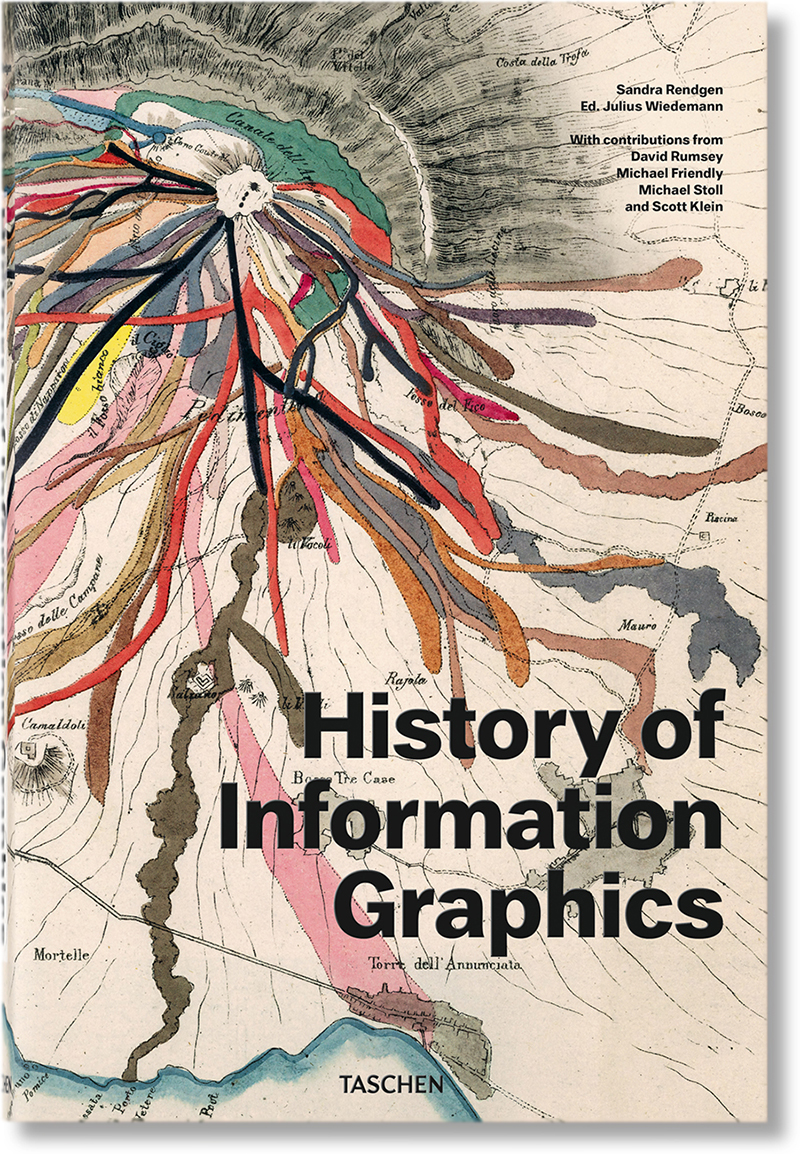
This impressive guide to historical graphics, curated by Sandra Rendgen and edited by Julius Wiedemann, was published last month. It’s big and heavy, in the Taschen tradition, and packed with around four hundred examples that track the development of information graphics from the Early Middle Ages to the end of the twentieth century. The historical progression is punctuated by separate sections that feature the collections of David Rumsey, Michael Friendly, Michael Stoll and Scott Klein. This is essential reading for people in our field.
Here are some sample spreads. Click on the images for larger versions.
Below, Beatus of Liébana, ca.1180.
Hartmann Schedel and Michael Wolgemut, 1493.
Charles-Joseph Minard, 1869. (From Michael Friendly’s collection.)
Emma Willard, 1846.
Left, Carl Weigand, ca. 1963. Right, Hermann Bollmann, 1964.
Massimo Vignelli and Bob Noorda, 1972.
Taschen’s website: https://bit.ly/2Z7pdiD
Transparency
I have a graphic in the twentieth-century section, but I’ve tried my best to be objective about the book. If you get a copy, you’ll see what I mean about there being a lot to learn from these pages.
35,000 years ago
The first post on this blog (in August 2016) was a very short history of infographics: https://wp.me/p7LiLW-9C

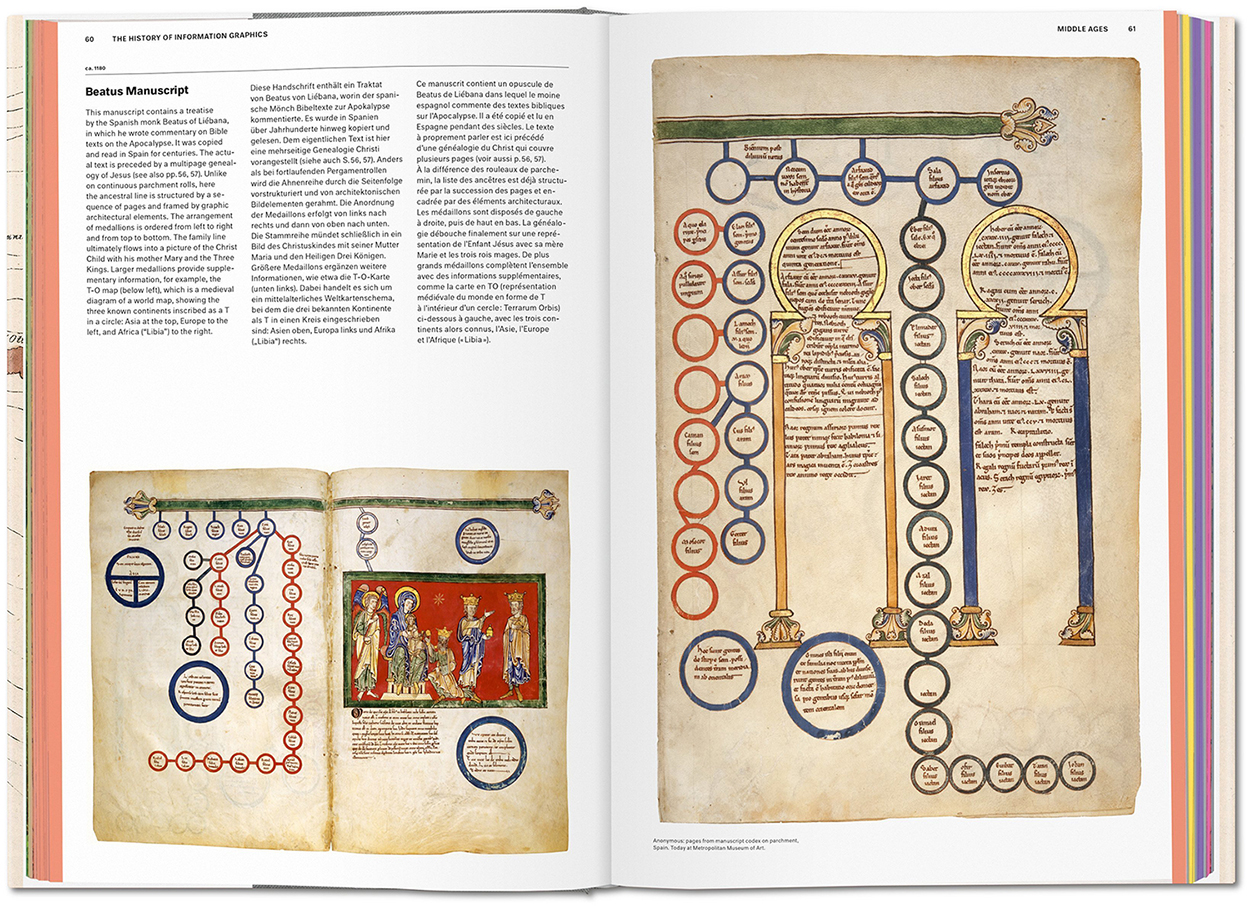
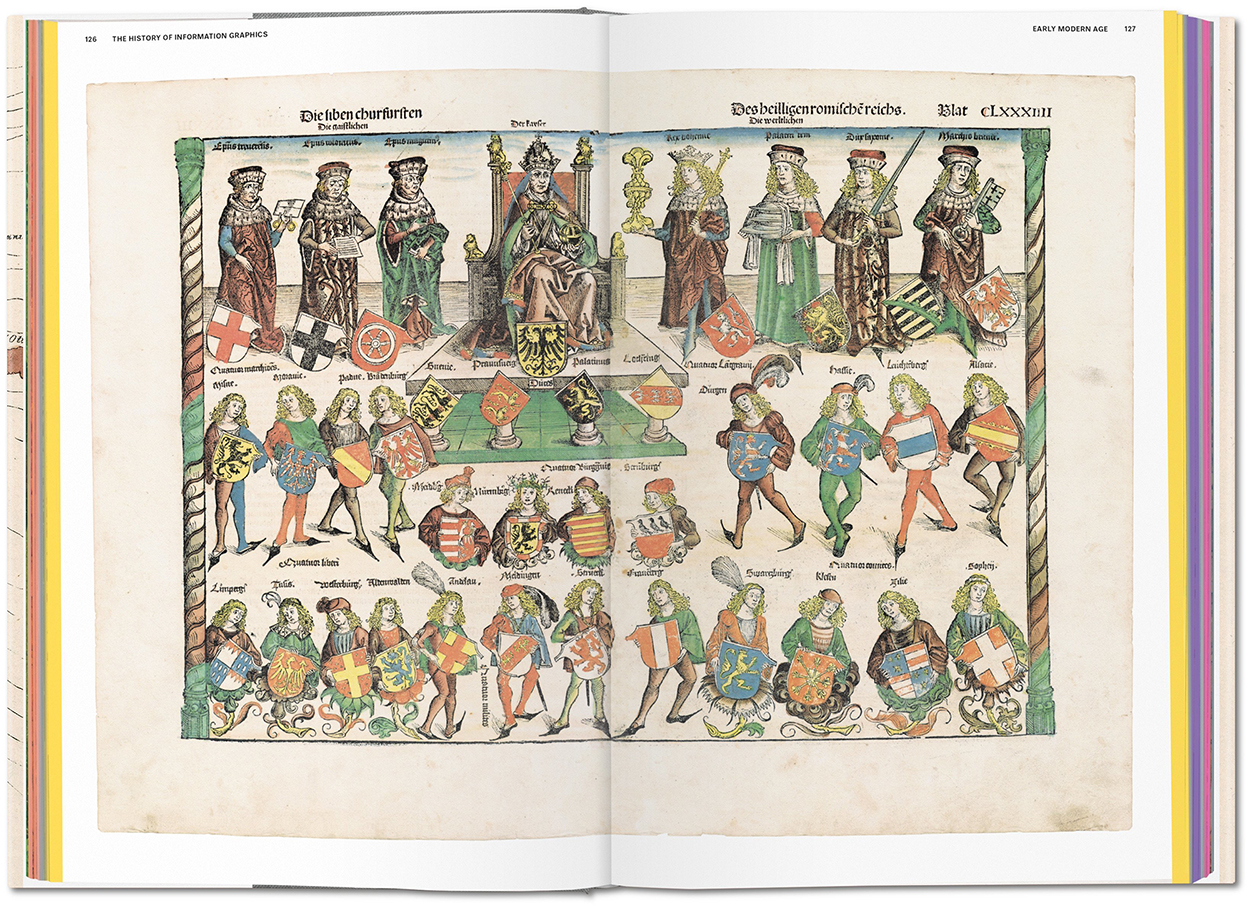
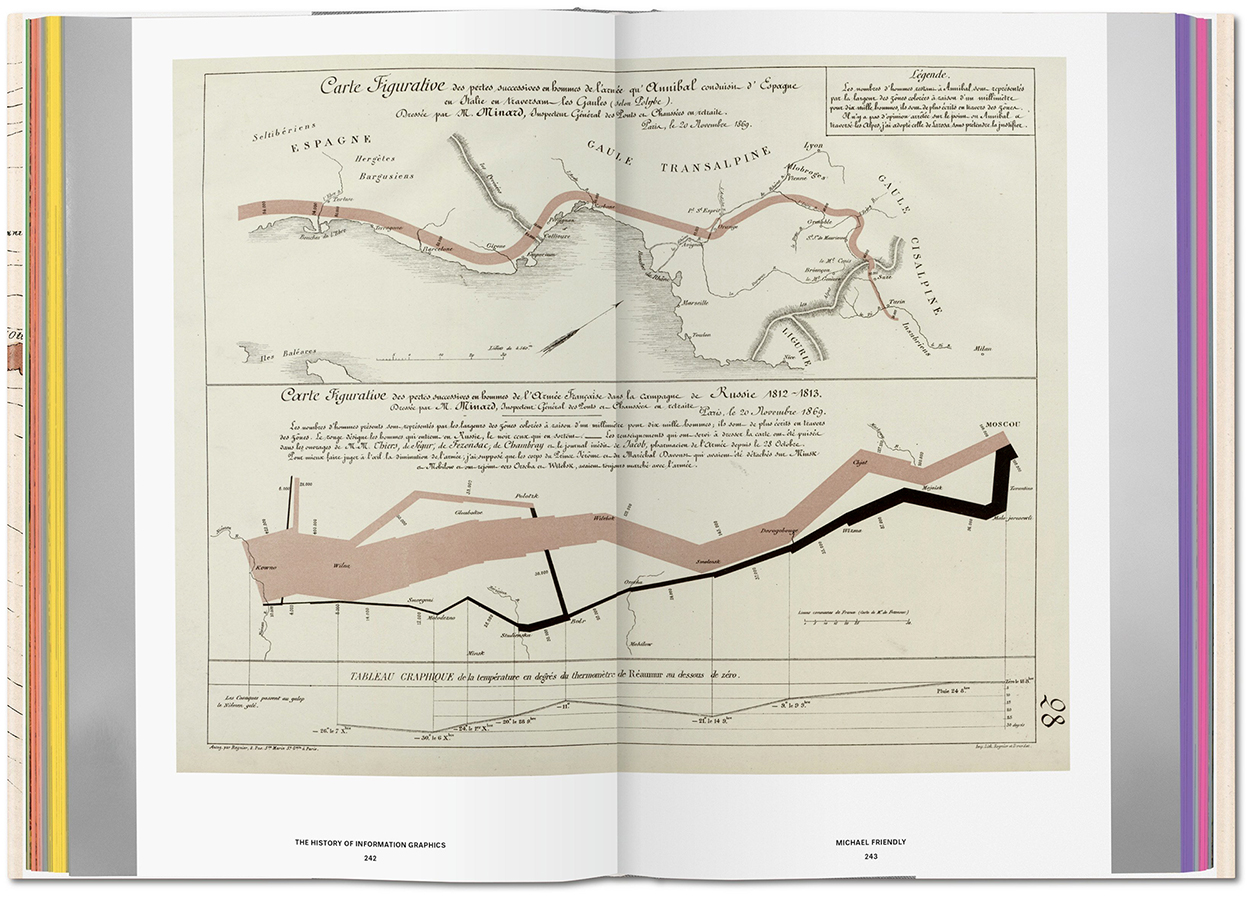
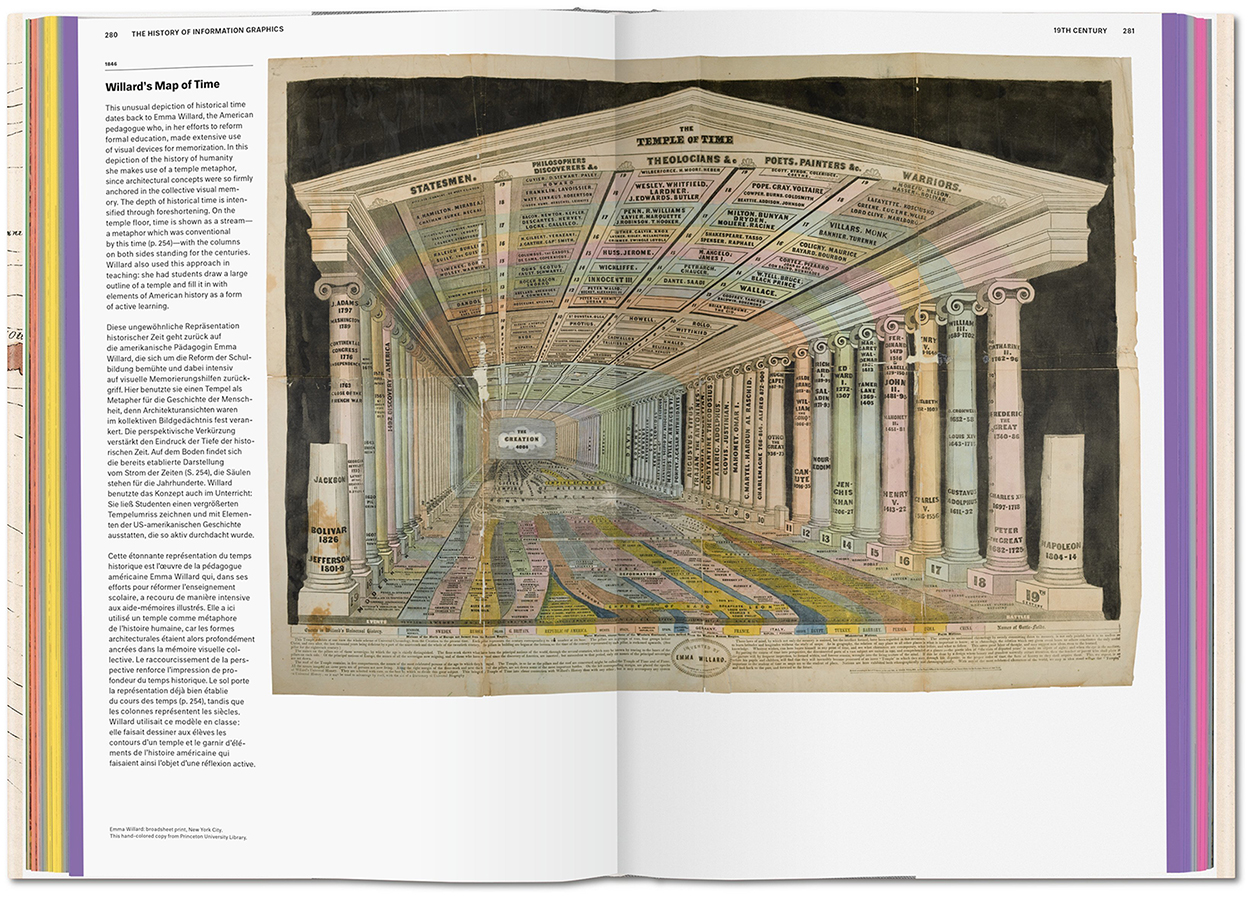
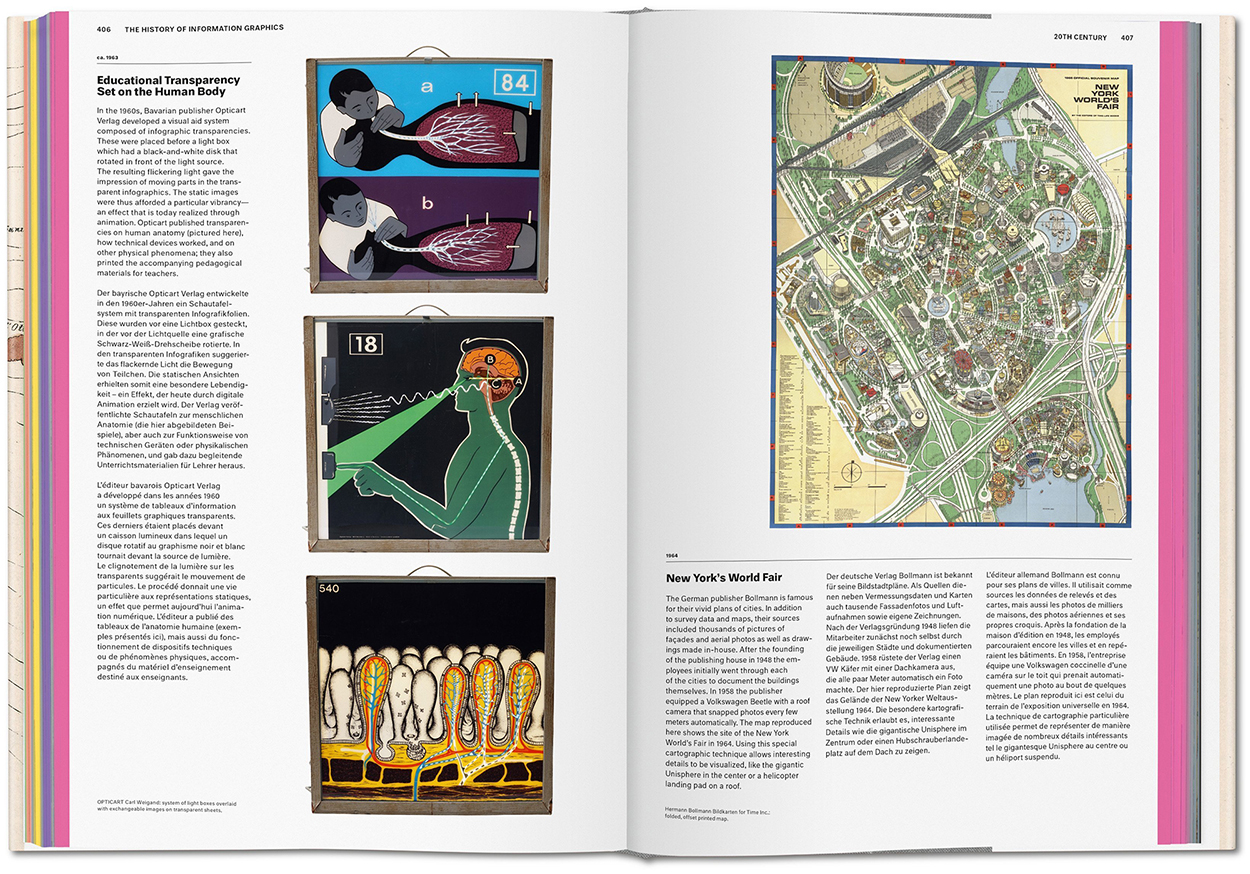
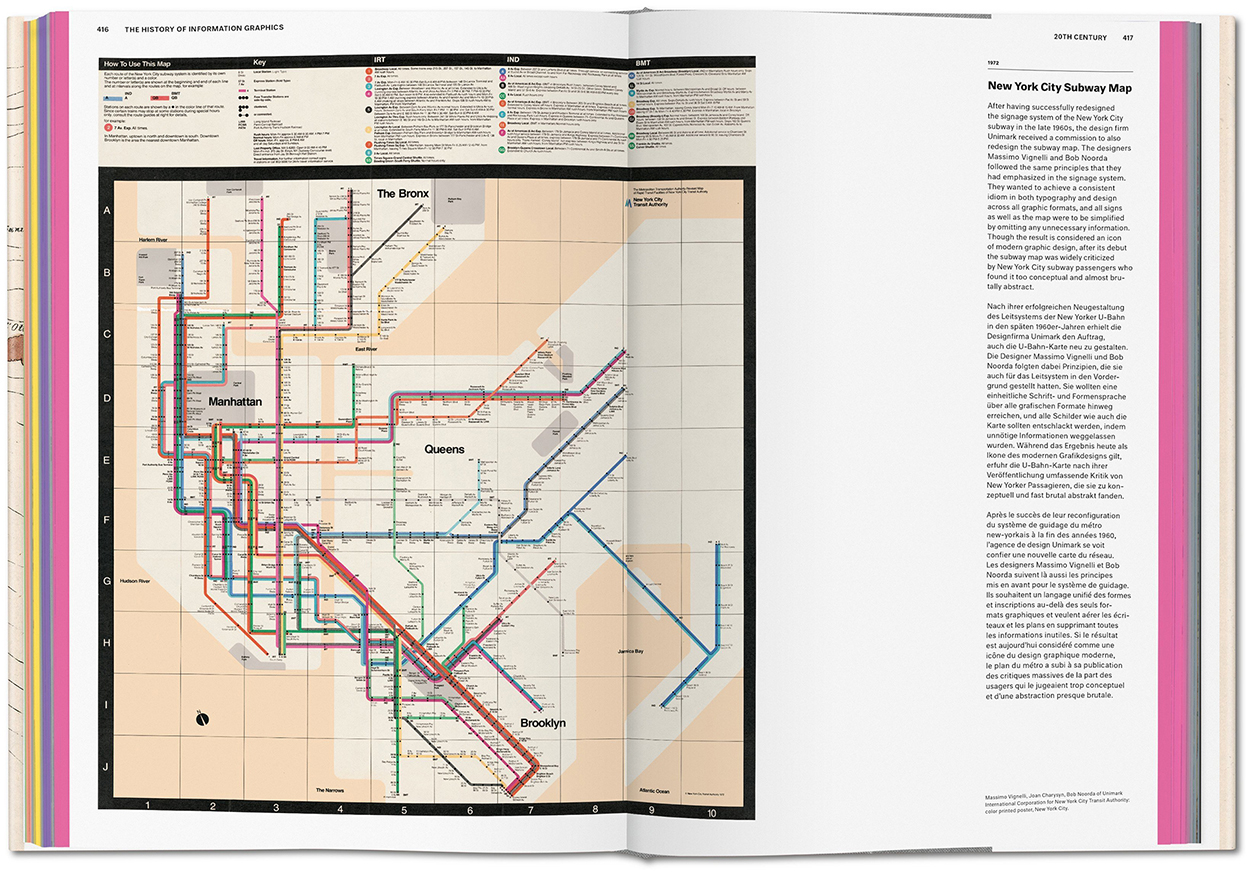
One comment
Comments are closed.